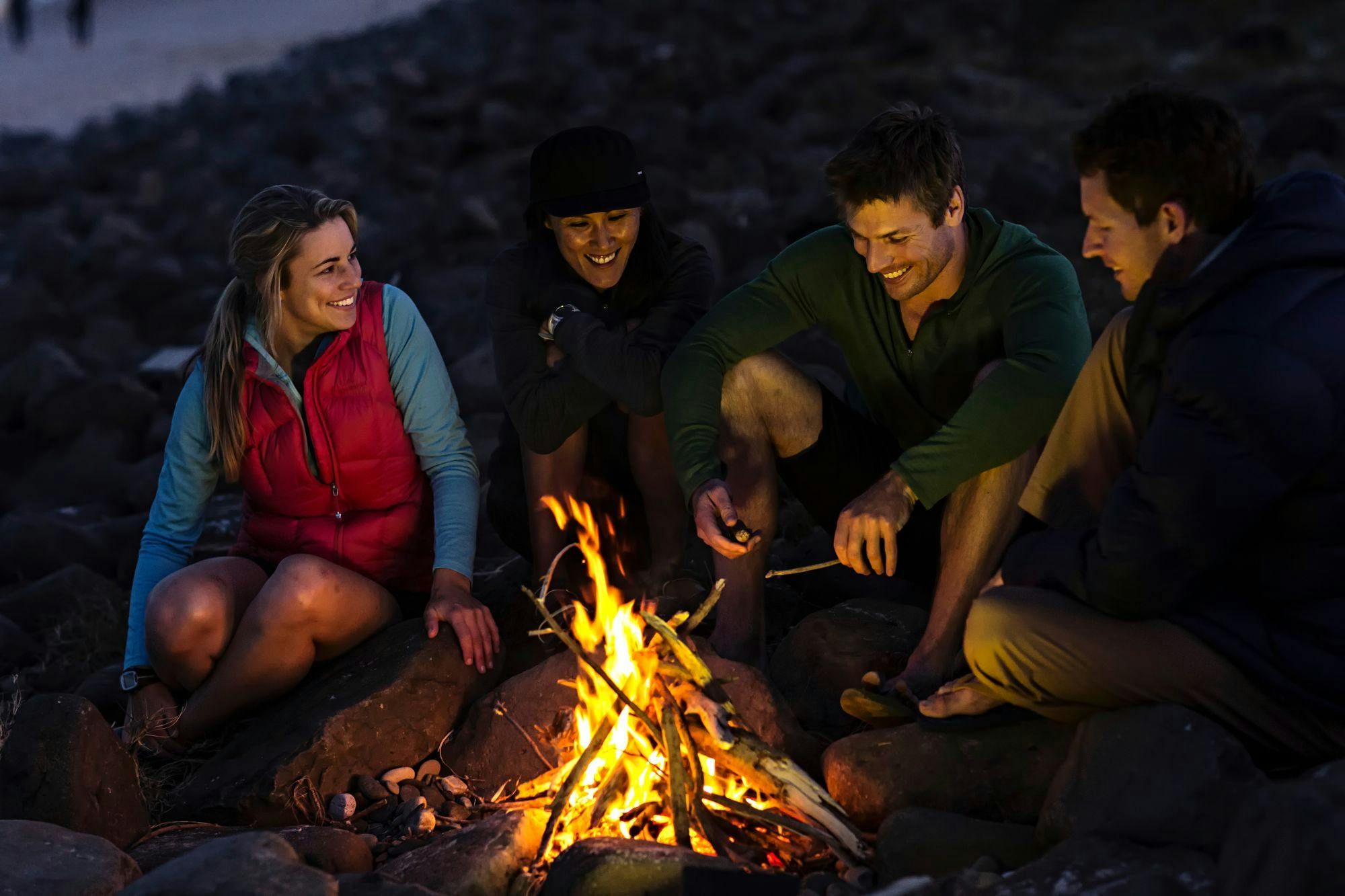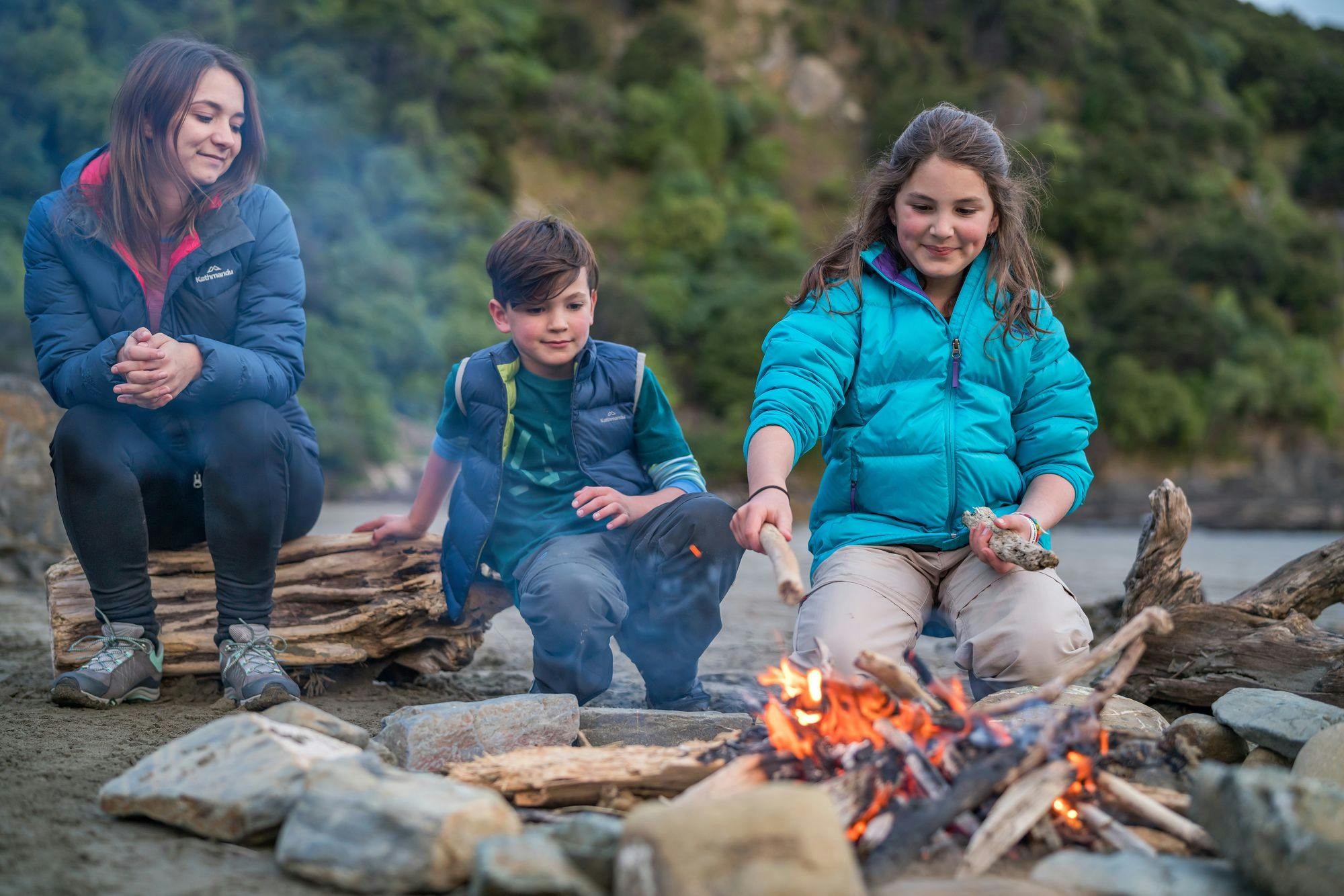Who doesn't love a good campfire? It's the heart and soul of any wilderness hangout, casting a mesmerising glow and hypnotic heat that brings people together like nothing else. But if you want to build a campfire like a pro, whether you're roughing it in the backcountry or kicking it at a campsite, we've got you covered.
Do your research
First off, check the rules! Before you start stacking your logs, make sure it's safe and legal to build a fire where you are. Once you've got the green light, scout out a spot that's at least three metres away from anything flammable like trees or bushes, and use a designated fire ring or pit if available.
Choosing your spot
Using a fire ring will lessen your impact and keep your fire contained, so make use of any existing ones. If there isn't any available, build one out of rocks, and ideally, use sand or gravel as your base. That way, you can avoid scorching the earth and sterilising healthy soil. Make sure to dismantle your firepit before you leave, and put everything back where you found it.

Gathering wood
Now, if you're camping in a campground, make sure you use only local firewood. You can often find firewood for sale at nearby stores or through campground hosts. But don't bring firewood from home - this is to prevent the potential introduction of invasive insects into the forest.
When you're in the backcountry, don't cut live trees or break off branches from standing trees, even if they're dead. Wildlife rely on dead branches and for their habitat. And don't gather or burn pieces of wood thicker than an adult's wrist, as they rarely burn completely, which is wasteful and difficult to dispose of properly.
For best chances of success, seek out dry wood of varying shapes and sizes. Tinder includes small stuff like twigs, dry leaves, needles, or forest duff - anything that will catch fire easily. Kindling should be small enough to not overwhelm a small flame, but big enough to be able to stack larger logs on top of it once the flames have grown.
Lighting the fire
Everybody has their own style of building the perfect fire. Three popular tactics include:
- The teepee method is perhaps the most classic way to build a campfire. To start, gather some small twigs and arrange them in a teepee shape in the centre of your fire pit. Then, place some kindling around the base of the teepee, leaning them against the twigs to form a pyramid. Finally, add some larger logs around the outside of the kindling. Light the twigs from the bottom and watch as the fire spreads upward, consuming the kindling and logs in turn.
- The log cabin method is similar to the teepee method, but with a twist. Start by laying two larger logs parallel to each other, with some space between them. Then, lay two more logs perpendicular to the first two, forming a square or rectangle. Fill the center of the structure with kindling and small twigs, and light it from the bottom.
- The lean-to method is great for windy conditions, as it creates a sheltered area for the fire. For the simplest style of a lean-to fire, find or place a thick log on the ground and lay your tinder against it, away from the wind. Lean your kindling against the log, so it covers the tinder — once you ignite the tinder, the kindling will catch and begin slowly burning the log. As the fire grows, gradually add larger sticks to build it up, and add another full-sized log to the fire when it is big enough.
When lighting your campfire, use long matches or a lighter. Avoid using flammable liquids like gasoline or lighter fluid to start your fire. They can cause dangerous flare-ups and explosions.

Responsible fire management
While your fire is burning, never leave it unattended. When you're ready to put out your campfire, let the wood burn down to ash. Then, use water to douse the fire completely. Pour water on the fire until you no longer hear any sizzling sounds or see any smoke. Mix the ashes and embers with the water, and then use a stick to stir the mixture until it's cool to the touch. Using dirt or sand to extinguish your fire might seem like a good idea, but it can actually cause problems. The dirt or sand can insulate any hot coals that might still be burning, and they could reignite later and start a wildfire. So please, please, please use water.
Burning rubbish is a huge no-no, especially plastic, cans, or foil. When you're out in the backcountry, it's crucial to leave no trace of your campfire. Pack out any remnants you find in your pit, and make sure to extract any charcoal pieces left inside your fire ring. Carry the chunks away from your site, crush them, and scatter the remnants and dust throughout a broad area. And don't forget to dismantle any structure you might have built, leaving the area as pristine as you found it.
In conclusion, campfires are a great way to enjoy the outdoors, but it's important to build them safely and responsibly. Follow these simple tips, and you'll have a warm and cosy fire that you can enjoy with friends and family.






